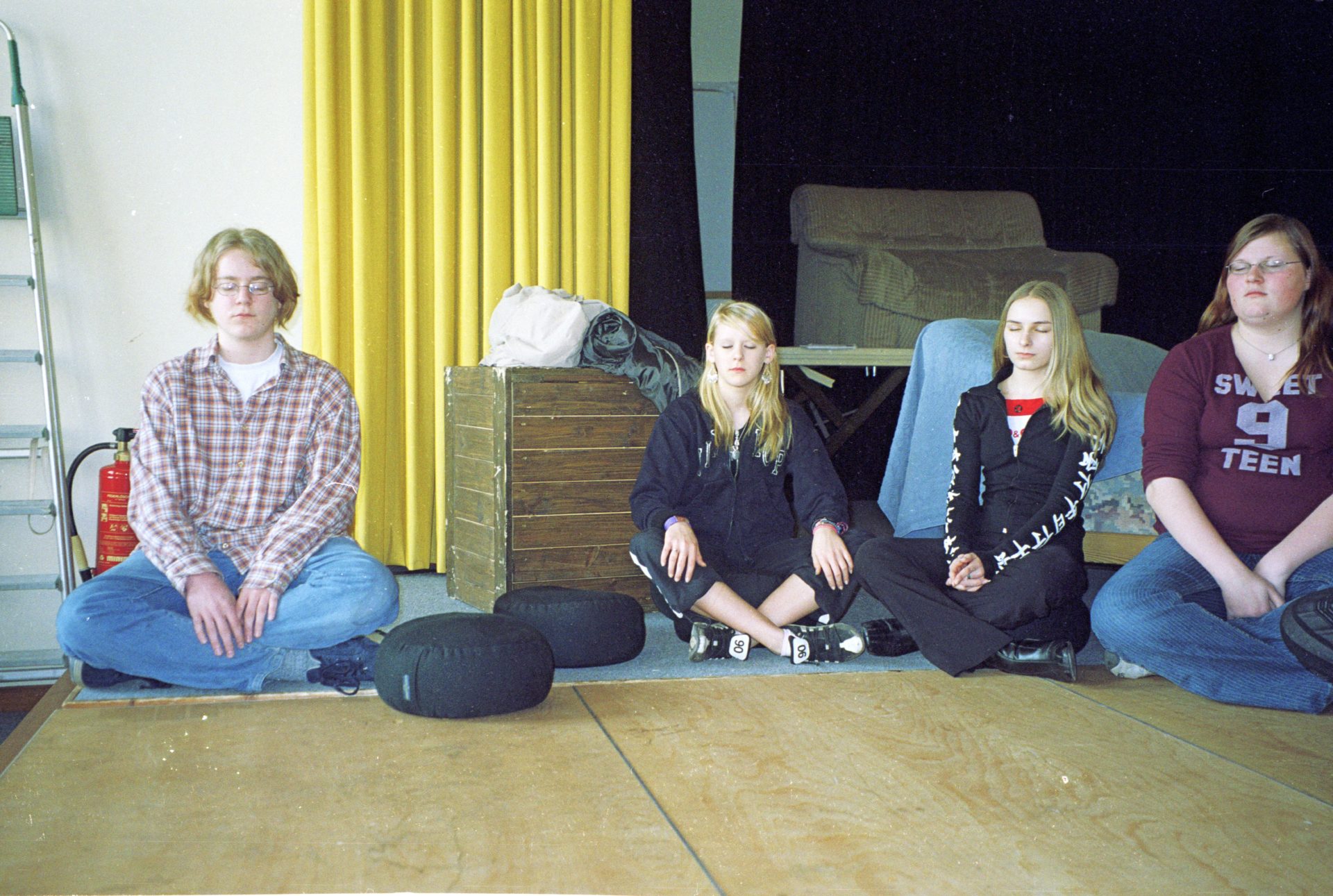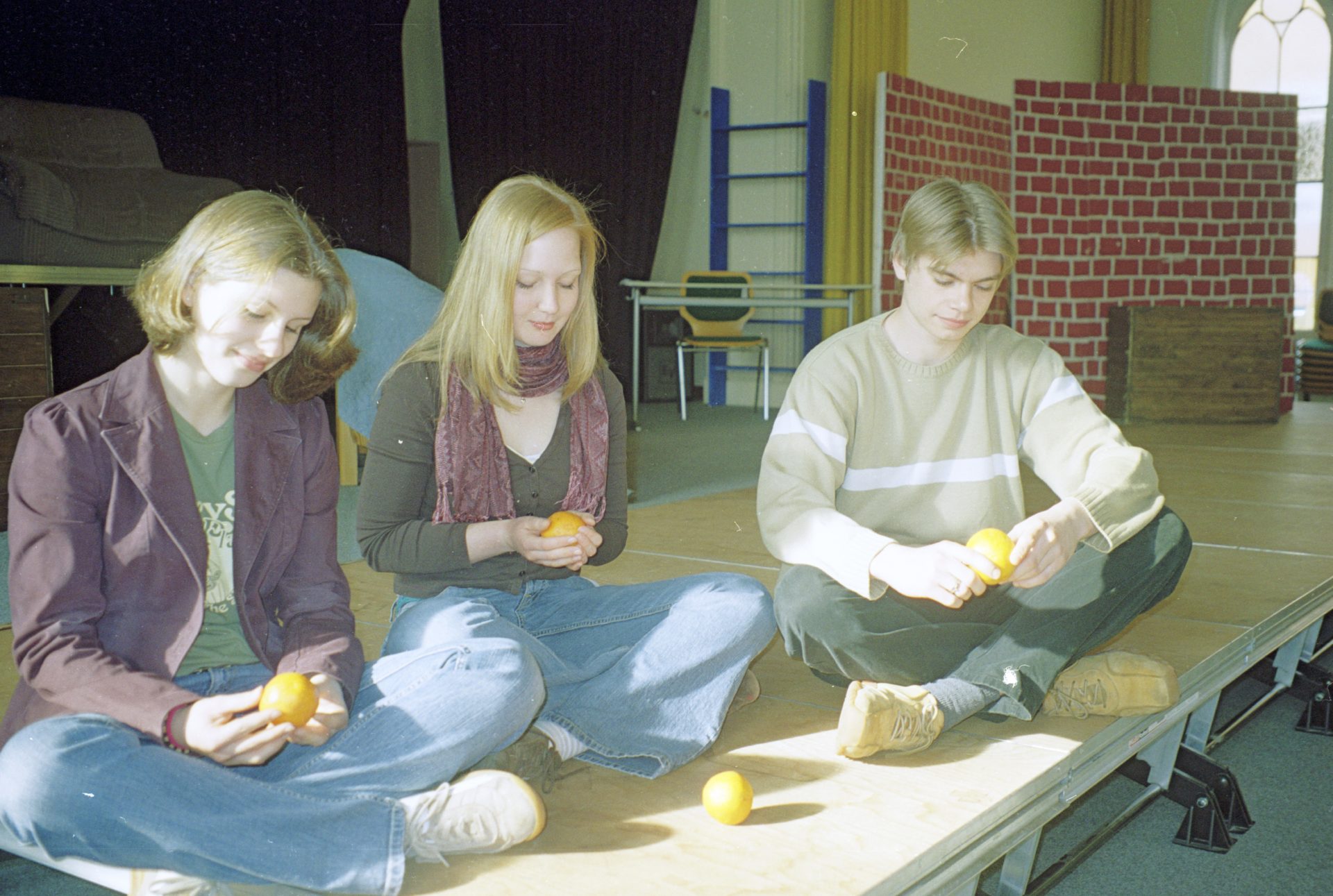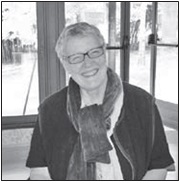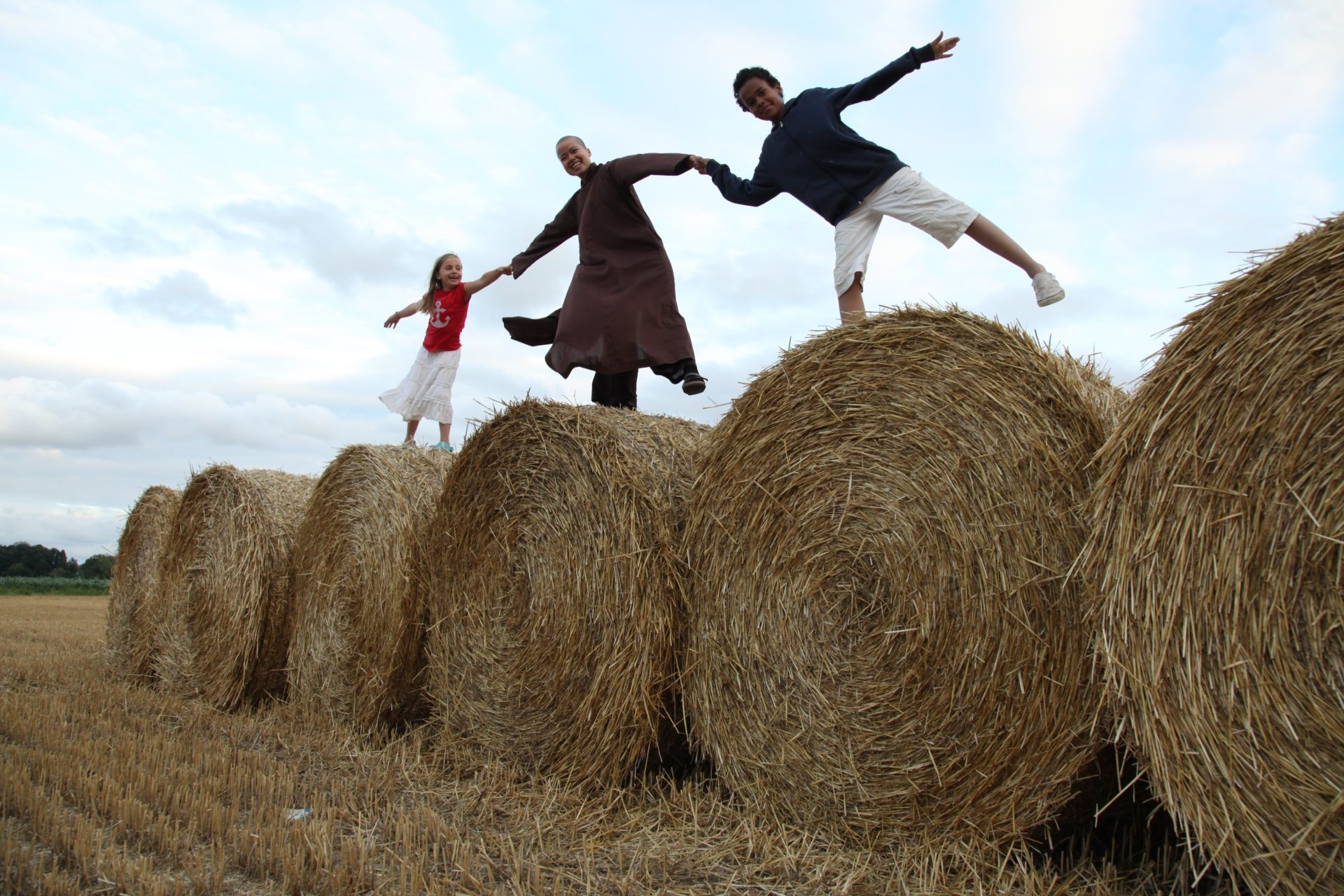By Cara Harzheim


For thirty-six years I taught in the Grammar School Ludwid-Meyn-Schule, a big high school near the River Elbe, Germany. I was one of seventy-eight teachers in this school of 1,040 students. Teaching was my greatest passion in life. The students were my children, my friends, and my combatants.
In the winter of 1994-95,
By Cara Harzheim


For thirty-six years I taught in the Grammar School Ludwid-Meyn-Schule, a big high school near the River Elbe, Germany. I was one of seventy-eight teachers in this school of 1,040 students. Teaching was my greatest passion in life. The students were my children, my friends, and my combatants.
In the winter of 1994-95, I spent two weeks at Plum Village. There I found my spiritual teacher, Thich Nhat Hanh. I received the Five Mindfulness Trainings on January 2, 1995, and when I returned to Germany, I began meditating regularly with my students.
The students called me their “teacher of meditation”: “the exceptional colorful flower of the school, the teacher you can talk to, who listens profoundly, understands you, and gives the advice you need. She is the one you ask for help when your friend wants to commit suicide. She dances with you the whole night through. When you come from a rural background and are afraid of male authoritarian teachers, she supports you to speak up. She sings with you songs of freedom and peace for Blacks, Indians, and Vietnamese and she speaks about global ethics and your behavior in this world of ours.”
Every day, from Monday to Friday, I offered the students fifteen minutes of meditation during the two twenty-five-minute breaks of their day. We practiced several different kinds of meditation, all of which the students loved: sitting meditation (be aware of your in- and out-breath), guided meditation according to Thay’s books, pebble meditation, metta meditation, walking meditation indoors if it rained or outdoors in the former cemetery next to the school, total relaxation, tea ceremony, and mindful eating of a tangerine or biscuit.
When the students had taken part in ten meditation sessions, they got a certificate that said: “She has participated in the meditation extracurricular activity with great success.” Both younger and older students loved to get that paper.
Away from the Turmoil
I always tried to have a room that was quiet and good for meditation, “a room of silence.” First I found an attic under the roof, in which I put a carpet and twenty-five of my own multicolored cushions which I had bought in India, a golden Buddha statue, an icon of Mary and the child Jesus my father had brought from Russia, a big bell and a small bell, an earthen teapot and small cups, a water boiler, some candles, and incense sticks. The caretaker of the school was not happy when he heard I used a water boiler and candles in the attic. He tried to close down the room several times because I didn’t give up preparing tea.
We were moved to a restored room adjoining this attic. However, the substitute headmaster didn’t like us to sit on the newly installed carpet. We fled to the cemetery outside and found it was the right place to meditate about impermanence, illness, and death. A music teacher who was a fervent supporter allowed us to use the music rooms. We sat among all the instruments and tried to generate calmness, understanding, and loving-kindness. We tried to gain a little bit of peace and freedom.
In the end, students collected signatures from other pupils, teachers and parents, and we were allowed to use one of the last cellar rooms with hardly any light. All my groups helped me to furnish it again. We had a big tea ceremony with cookies and Plum Village songs in English and French. It was a cozy room far away from the turmoil of normal hectic school life.
Zen Is Cool
I taught lessons in East Asian and western philosophy to students who didn’t want to take part in classes of religious education (Catholic, Protestant). We spoke about their interests: How to live happily? What is death? How to live sexually? When we explored ethics and metaphysics applied in this world, I introduced the Five Mindfulness Trainings to the students, who showed a deep concern about them.
The first lesson of each Monday morning was Beginning Anew. “How did I nourish myself last weekend?” “What do I focus on this week?” In the lessons before a test, students asked for a guided meditation (“I am blooming as a flower”) and after the test, a deep relaxation to let go of all the frustration and excitement. On Fridays, the students reflected on what had happened during the week, how they could relax during the weekend in a good way, and their plans for the next week.
Twice a year there were project weeks in the school, offered by teachers, parents, or students. Twice I offered Meditation Practice according to Thich Nhat Hanh. Students drove every day to my old farmhouse and practiced mindfulness in walking, sitting, washing and cutting vegetables, reading the Five Contemplations and eating, learning gathas and Plum Village songs, and enjoying deep relaxation. They felt they had participated in the best project and were proud to find their photos in the local newspaper.
I facilitated a one-day project, “Zen Is Cool,” with forty students in the biggest room of the school. We sat, walked, explained the Five Mindfulness Trainings, offered a tea ceremony and tangerine meditation, and listened to the story “The Hugging Judge.” We exchanged little red hearts with the promise to give them to someone we loved. We ended with hugging meditation. Their little brothers and sisters received the hearts with astonishment and joy.
Plum Village Retreat
In 2006, I brought seventeen students with me to a twenty- one-day retreat at Plum Village. They committed to a trip without alcohol, cigarettes, meat, McDonald’s, or television during the Football World Cup. The students loved Lower Hamlet. The boys stayed in tents behind the pine and fir trees, and the girls and the two women teachers in tents behind Dharma Nectar Hall among the plum trees.
The students loved Thay and his extraordinary presence. When he addressed them personally, they were proud. They appreciated Sister Jina’s gentle authority, kindness, understanding, and willingness to let them remain together as a group in Lower Hamlet. Sister Chan Khong conquered their hearts by singing songs and lullabies for them in a special audience. They loved her wit, her openness, and her love of young people. They also enjoyed Sister Bi Nghiem’s dry humor and the great care she took of them.
The students loved walking up the hill to Loubès Bernac and looking down on the plain of Duras. They took great pleasure in the mindful swimming lazy day in the lake of Castelgaillard and all the potatoes and healthy pizzas the nuns cooked for them. In front of Thay and all the retreatants, they offered a drama about slowing down. A breakfast with the Jewish group left a lasting impression on them: the sharings and openness, the wishes for recognition of suffering, and the willingness for reconciliation.
Upon return, the students’ parents were aware of transformations in their children’s abilities to be more understanding and loving, to listen, and to practice mindfulness. The students never forgot this wonderful twenty-one-day retreat and continued to participate with joy in walking and sitting at school.
Here are some quotations from the students. Rebecca (11th year) said, “The meditation room is the most beautiful room of the school. There I can focus on my real self and I can let go of everything else. I feel at ease and I’d like to stay there longer.” Anna-Lena (A-level class) shared: “Meditation does you good. You start concentrating on your breathing. You come back to yourself and are aware of your body. Normally I have the problem of thinking too much.” Daniel (11th class) said, “I meditate at home every evening. I’ve noticed that I have become calmer and more confident.”
Meditation became a vital part of normal school life in all its forms. The students learned the tools of coming back to their breath, calming down, and concentrating by letting go of wrong perceptions. Meditation has enriched their lives and given them the opportunity and the hope “for a better future to be possible.”

Cara Harzheim, True Wonderful Compassion received the Fourteen Mindfulness Trainings in 1999. In 2008 she emigrated from Germany to France. She now lives in Puyguilhem, ten minutes from Lower and Upper Hamlet. She feels she has really arrived and is home living next to Thay and being part of the Fourfold Sangha.

